Idea by
Lucia Tinghi
Call for ideas 2021
The Outdoor Living Room
The Outdoor Living Room
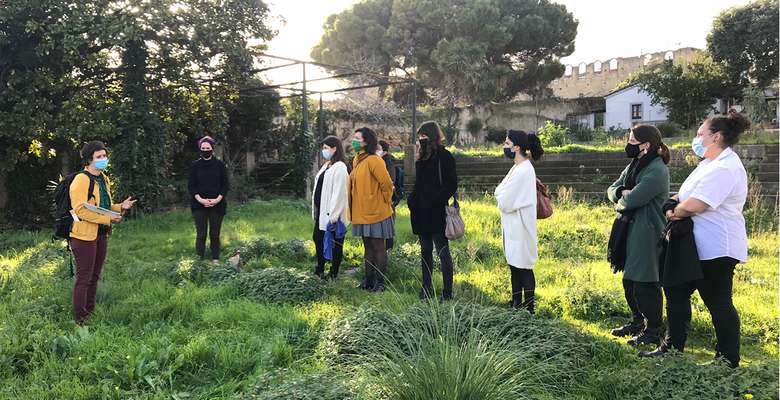
- Site-specific cases
The Edible Garden of Marvila raises vegetables, sofas, fireplaces and friendly faces. This landscape gathers of living and non-living elements in a microclimate where senses awaken due to nature's flavors, images and perfumes, produced and cared by themselves.
Learning from the pandemic situation, the architecture of the commons is on the table, as a basic ingredient of the recipe for a shared Edible Garden. The presence of the kitchen brings a unifying theme and increases the diversity of activities, expanding the mix of people and plants: neighbors can cultivate, cook, eat or just wander around and breathe. Anyone can come and furnish the room with decoration, plants, events… A biodiverse environment is reached by, for example, reproducing old species, adding wild weeds into the menus and by inviting to share seeds and dishes.
This specific example of construction of this Outdoor Living Room managed collectively can be replicated around and outside the city of Lisbon.

We want to be outside! Breathing, touching and eating ...
The living room offers a place to garden and to be taken care of, providing practical and beautiful spaces.The borders adopt different features and shapes integrating community projects in a circular and diverse range of uses. Forexample, vegetables are used in the kitchen, herbs are shared with local restaurants, seeds are stored and flowers are contemplated, smelt and then used for dyeing. The care of the garden is a collective aim.
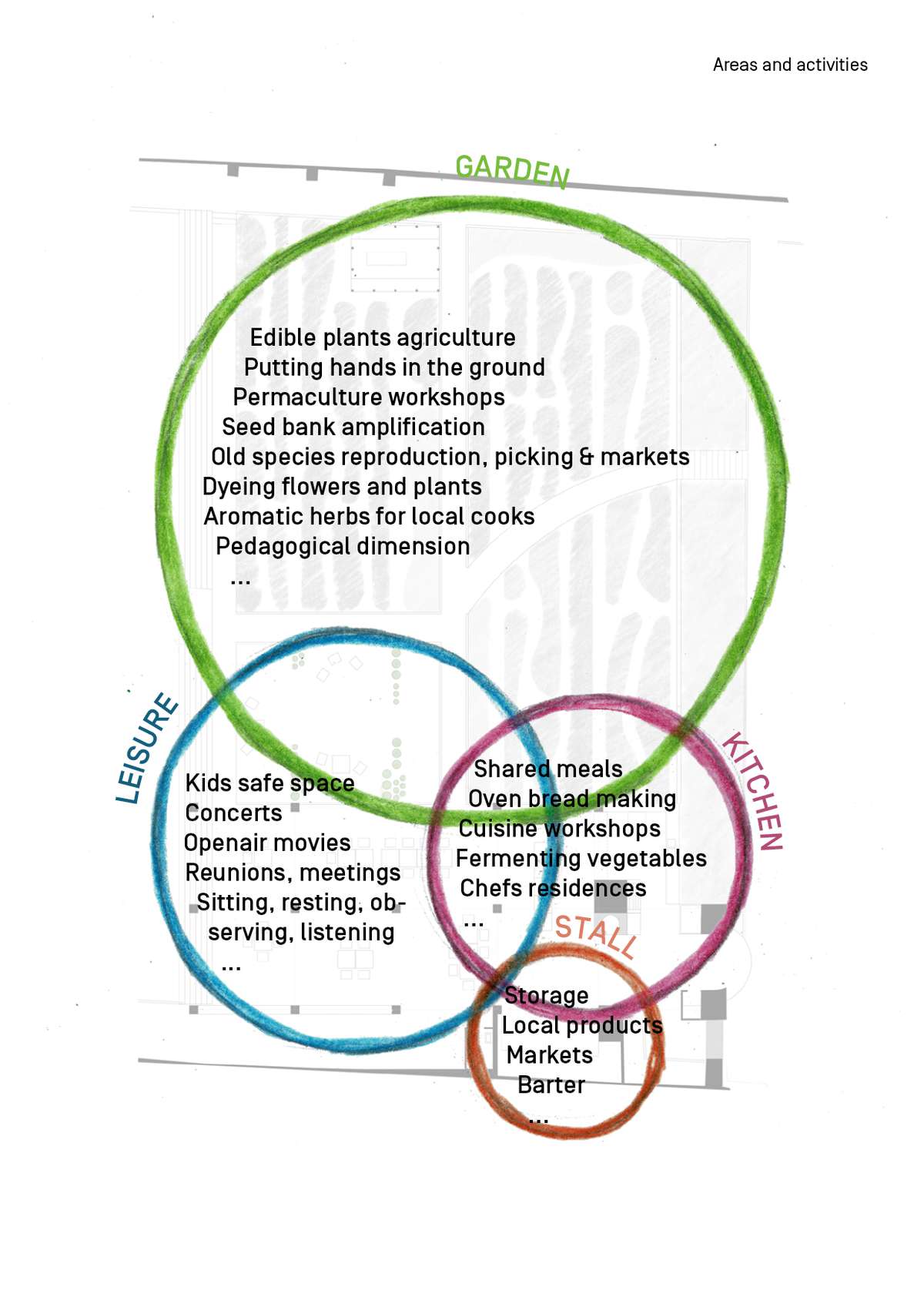
We want activities that make us feel good!
The different living spaces of the room allow to accommodate a diversity of bodies, genders and minds: our kinship is being enlarged. Parents and aunts farm while the children play, cooking enthusiasts are busy enhancing the harvest processes, friends play guitar under the magnolia tree while a nice smell is spreading around… This mixture brings relaxation, fulfilment and wellness, and whets the appetite! Itself being a seed to be grown and reproduced.
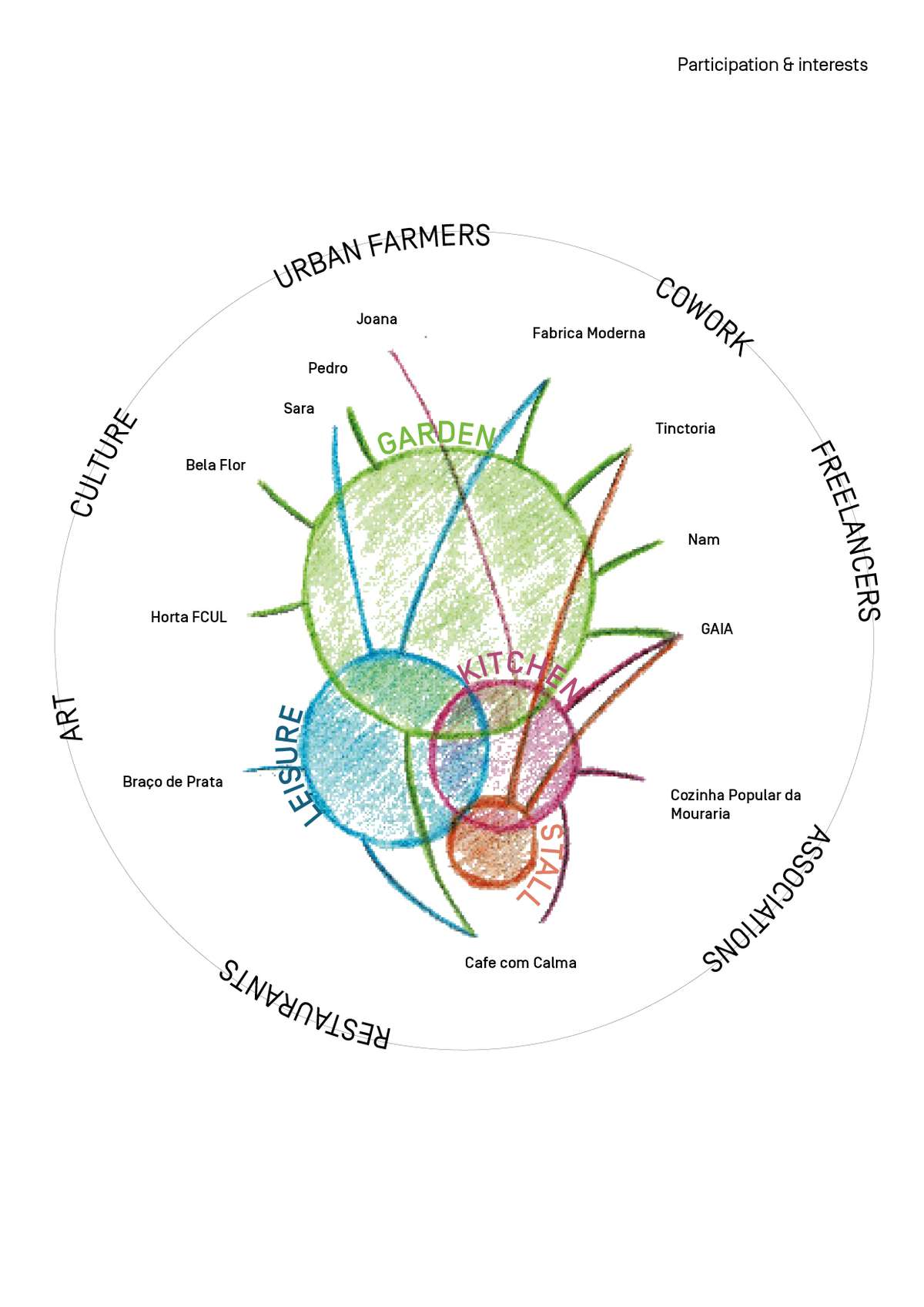
We want to know our neighbors!
The living room must be an open space. Considering the different profiles of the neighborhood and paying special attention to values of respect and conviviality, everyone can find their place, or invent it. For example: restaurants can offer cooking classes and organize a brunch, if the cultural and art collectives based nearby want to organize events, we have a stage! Do neighbors want to learn or teach agriculture pointers, and share their seeds? Welcome!

We want to taste delicious meals!
Fresh vegetables, creative cooking and good company, what else? Sustainable cooking deepens the knowledge and techniques of preparing seasonal and waste-free meals with local products. Cooking in the Garden is simple and without electricity: An oven and a barbecue. It is with constraints that the greatest creativity is born, grows and is transmitted. We look forward to tasting... As Donna Haraway put It clear: "We are hummus: make kin, make compost!”
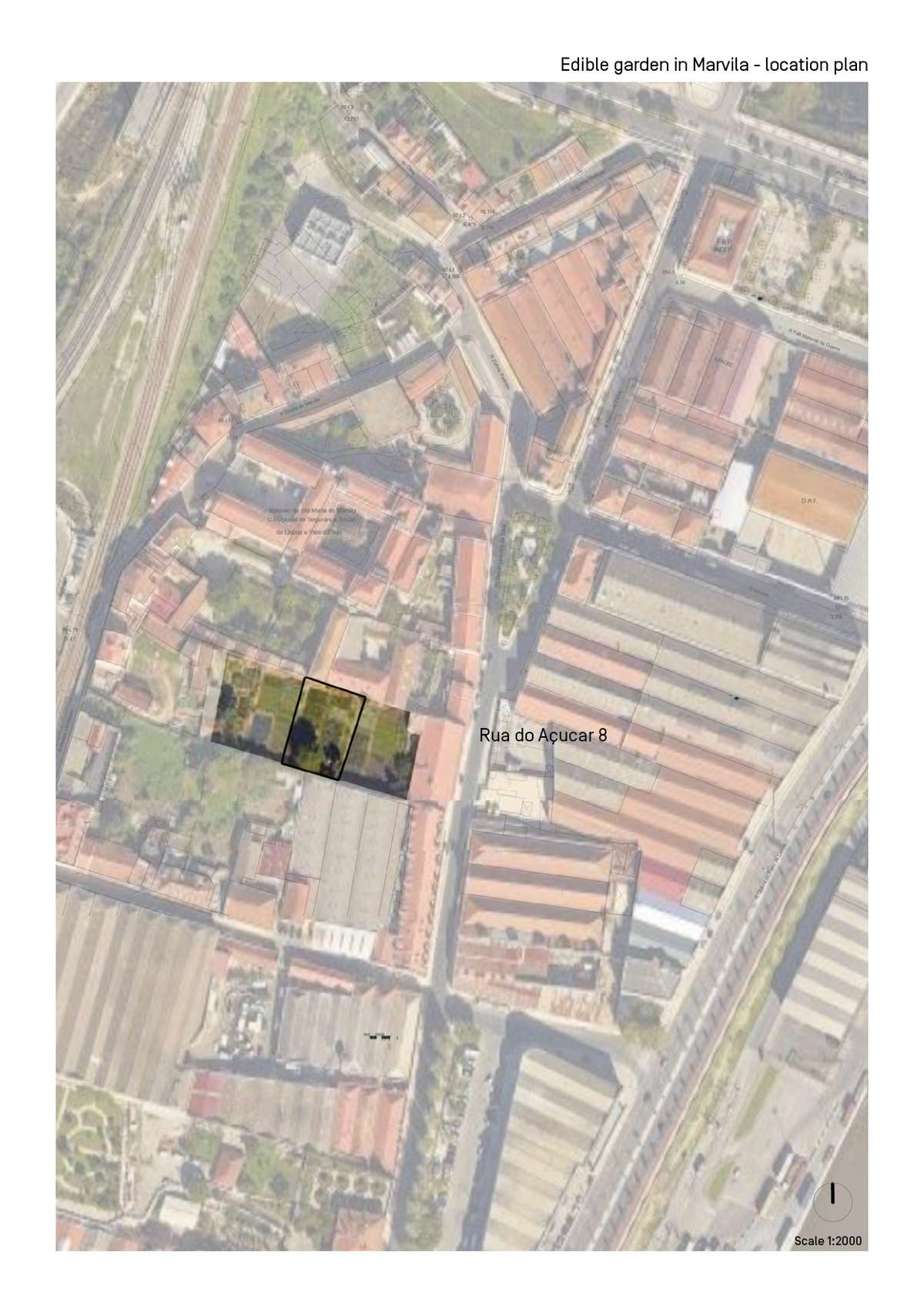
We want to fully live our city!
A new networked space multiply relationships and participation leads to the evolving appropriation of the place. This specific case benefits from an unused plot of public property in Marvila as there are many in the city of Lisbon. As a recipe, each Outdoor Living Room varies from site to site. However, research and practice solidify a common base for commons-based projects. Will we be able to find the missing ingredients? I bet we will…
The Outdoor Living Room
The Outdoor Living Room

- Site-specific cases
The Edible Garden of Marvila raises vegetables, sofas, fireplaces and friendly faces. This landscape gathers of living and non-living elements in a microclimate where senses awaken due to nature's flavors, images and perfumes, produced and cared by themselves.
Learning from the pandemic situation, the architecture of the commons is on the table, as a basic ingredient of the recipe for a shared Edible Garden. The presence of the kitchen brings a unifying theme and increases the diversity of activities, expanding the mix of people and plants: neighbors can cultivate, cook, eat or just wander around and breathe. Anyone can come and furnish the room with decoration, plants, events… A biodiverse environment is reached by, for example, reproducing old species, adding wild weeds into the menus and by inviting to share seeds and dishes.
This specific example of construction of this Outdoor Living Room managed collectively can be replicated around and outside the city of Lisbon.
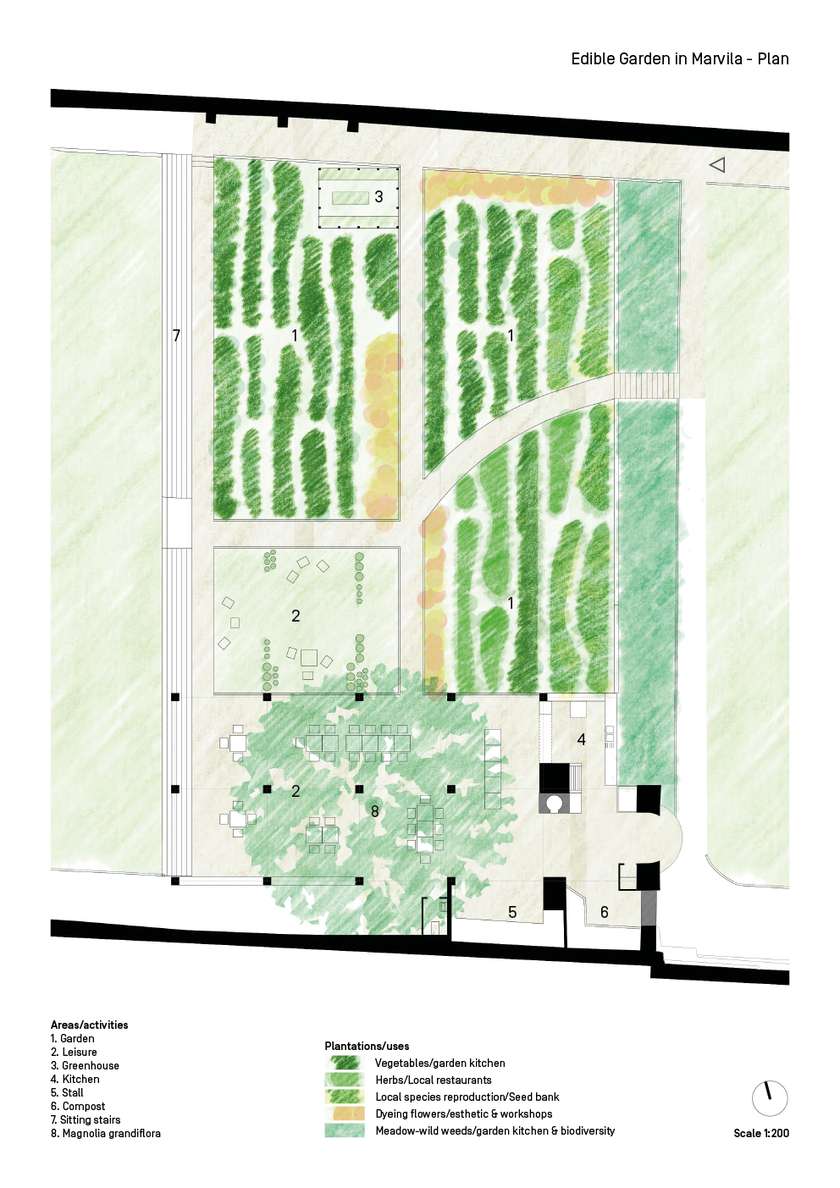
We want to be outside! Breathing, touching and eating ...
The living room offers a place to garden and to be taken care of, providing practical and beautiful spaces.The borders adopt different features and shapes integrating community projects in a circular and diverse range of uses. Forexample, vegetables are used in the kitchen, herbs are shared with local restaurants, seeds are stored and flowers are contemplated, smelt and then used for dyeing. The care of the garden is a collective aim.
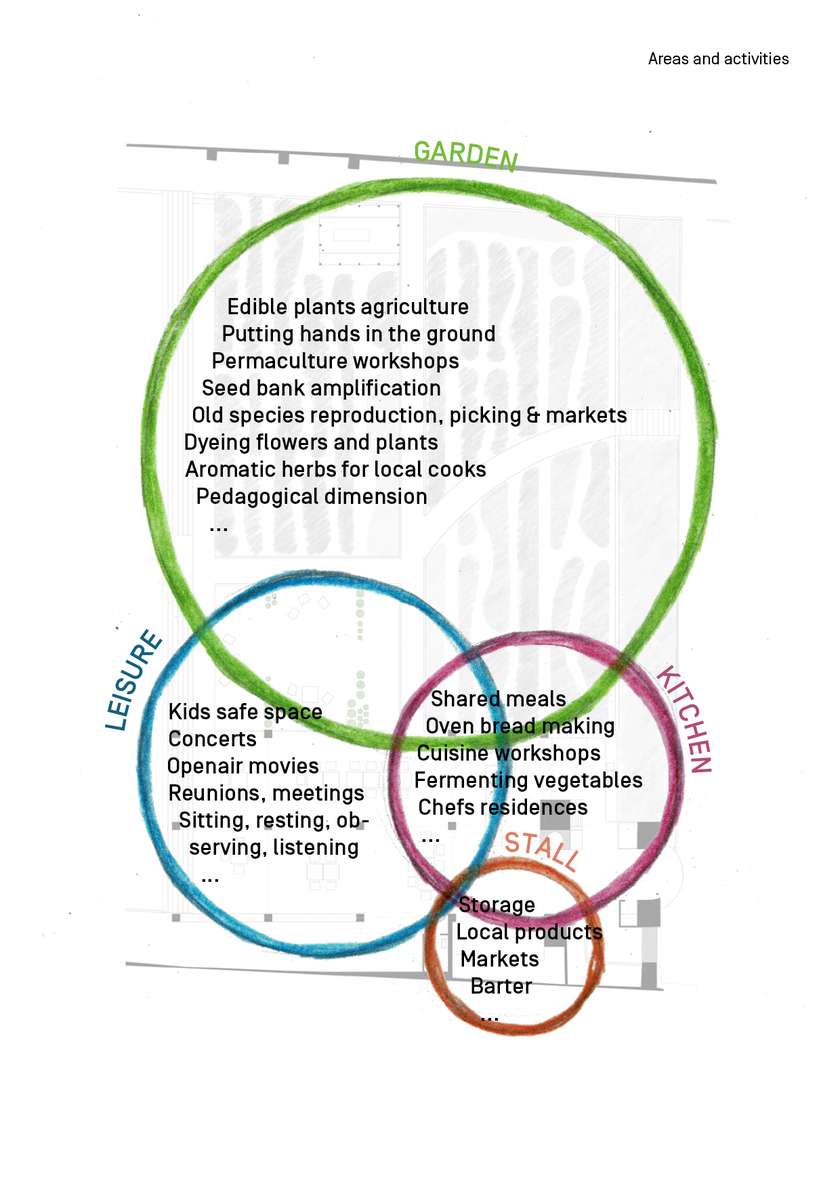
We want activities that make us feel good!
The different living spaces of the room allow to accommodate a diversity of bodies, genders and minds: our kinship is being enlarged. Parents and aunts farm while the children play, cooking enthusiasts are busy enhancing the harvest processes, friends play guitar under the magnolia tree while a nice smell is spreading around… This mixture brings relaxation, fulfilment and wellness, and whets the appetite! Itself being a seed to be grown and reproduced.
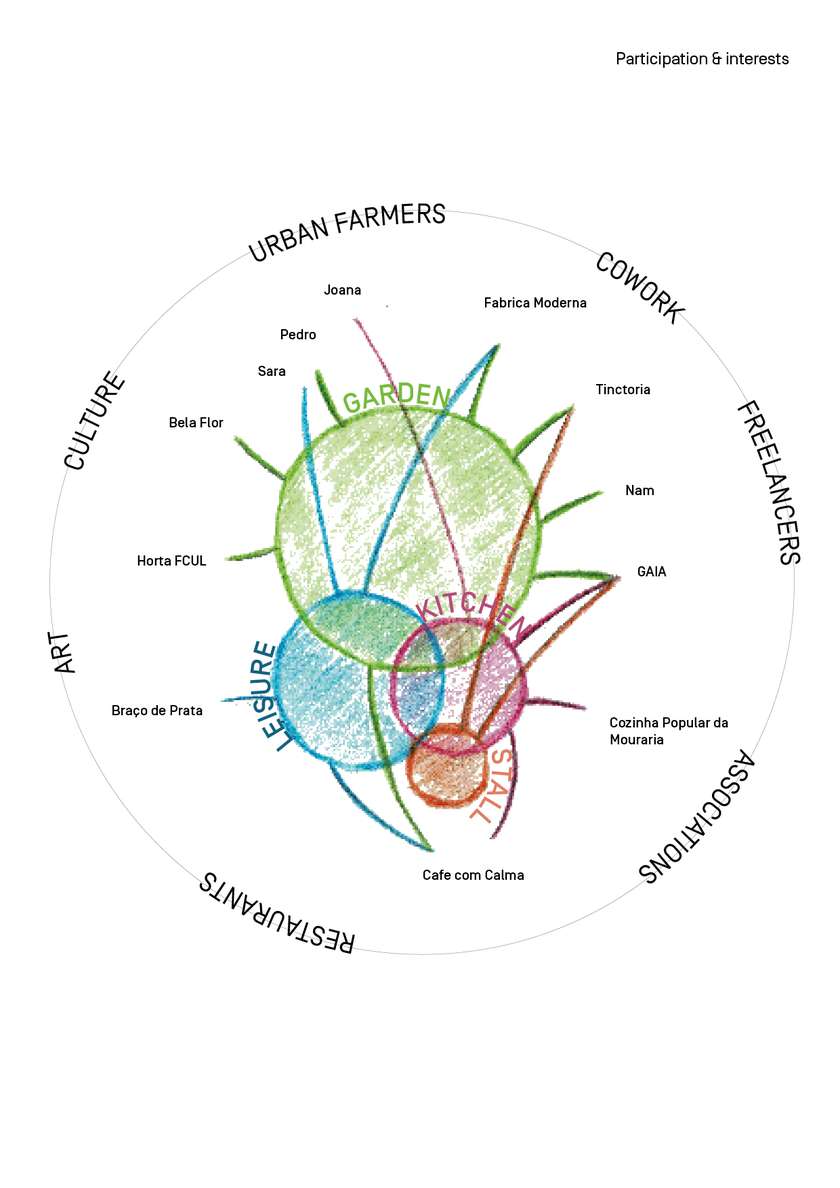
We want to know our neighbors!
The living room must be an open space. Considering the different profiles of the neighborhood and paying special attention to values of respect and conviviality, everyone can find their place, or invent it. For example: restaurants can offer cooking classes and organize a brunch, if the cultural and art collectives based nearby want to organize events, we have a stage! Do neighbors want to learn or teach agriculture pointers, and share their seeds? Welcome!

We want to taste delicious meals!
Fresh vegetables, creative cooking and good company, what else? Sustainable cooking deepens the knowledge and techniques of preparing seasonal and waste-free meals with local products. Cooking in the Garden is simple and without electricity: An oven and a barbecue. It is with constraints that the greatest creativity is born, grows and is transmitted. We look forward to tasting... As Donna Haraway put It clear: "We are hummus: make kin, make compost!”
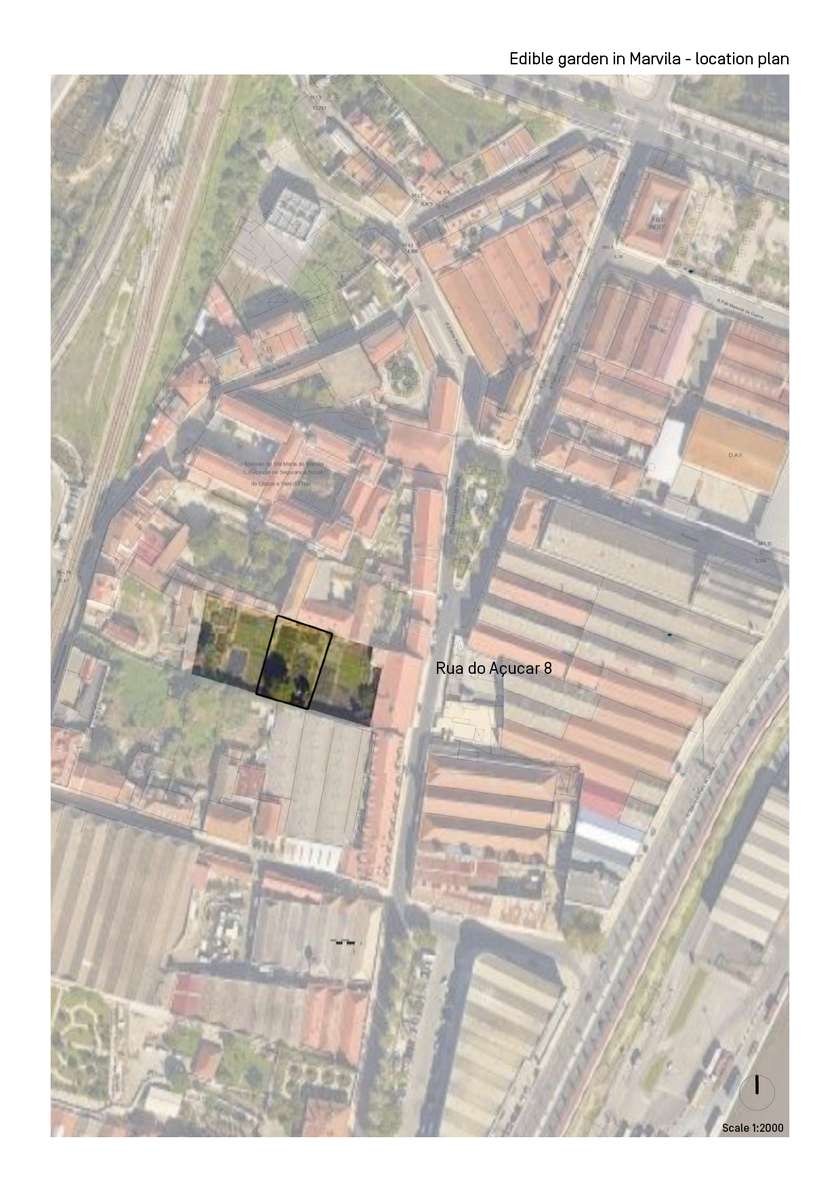
We want to fully live our city!
A new networked space multiply relationships and participation leads to the evolving appropriation of the place. This specific case benefits from an unused plot of public property in Marvila as there are many in the city of Lisbon. As a recipe, each Outdoor Living Room varies from site to site. However, research and practice solidify a common base for commons-based projects. Will we be able to find the missing ingredients? I bet we will…